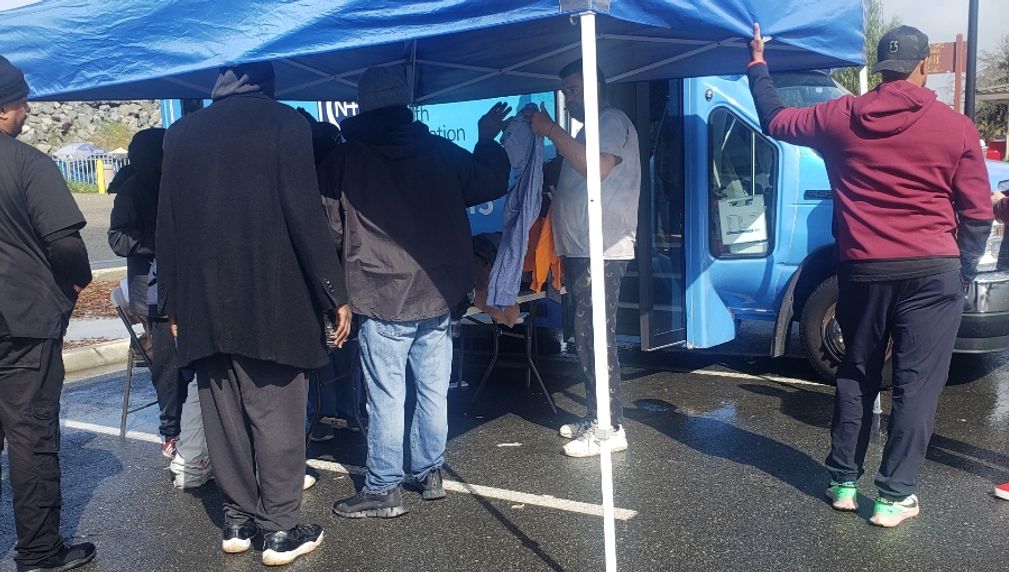VTH Supportive Services
To provide justice involved individuals with job training, education, placement, and assistance, while simultaneously gaining experience and observing additional services we provide such as: mental health, Substance Use Disorder (SUD) services, Medication Assisted Treatment (MAT) and case management. We'll work to decrease barriers to services specifically for BIPOC, People Who Use Drugs (PWUD), and People Experiencing Homelessness (PEH), create employment opportunities for justice involved individuals all while expanding services to PEH.

What is the primary issue area that your application will impact?
Housing and Homelessness
In which areas of Los Angeles will you be directly working?
San Fernando Valley
South LA
Antelope Valley
Other:: Long Beach
In what stage of innovation is this project, program, or initiative?
Expand existing project, program, or initiative
What is your understanding of the issue that you are seeking to address?
The complications of the opioid epidemic are compounded when considering the racial disparities/health inequities in LA County. "The 14 neighborhoods with the highest imprisonment rates are all clustered in S. Central LA where 57% of residents are Latino and 38% Black," (prisonpolicy.org 2022). Criminal backgrounds create additional barriers for BIPOC accessing essential services (i.e. mental health, housing, employment, etc.), and can often lead to increased substance use/homelessness. Between 2020-2021, there were 1,988 deaths of PEH, up from 1,271 deaths the year before. BIPOC who are also PWUD are often disproportionately linked to fentanyl due to factors related to systemic racism. The overdose mortality rates within the Black communities surpassed the deaths of whites beginning in 2018 (NCBI, 2021). The number of accidental overdoses is increasing due to individuals' inability to access mental health/substance use treatment services/presence of fentanyl.
Describe the project, program, or initiative this grant will support to address the issue.
As a Syringe Service Provider (SSP), we currently provide outreach services to PWUD and PEH in LA. The details of this project consist of two main components that both overlap. The first component is to provide job training, education, support, and assistance with ongoing, permanent employment for a minimum of 10 individuals per year. Those 10 individuals will be justice involved (e.g. formerly incarcerated, parole, etc.). The 10 individuals will be broken down into two groups of 5, each group of 5 will participate in a 6-month paid internship/training program. In addition to education/training, these individuals will also get first-hand experience with providing outreach services to PWUD/PEH around LA. Upon successful completion of the 6-month program the 5 individuals will be provided with employment assistance/job placement services by VTH. Depending on funding and staffing needs/opportunities, some of the 5 individuals might be offered permanent positions with VTH, referred to partner SSP providers, other health care organizations, or receive assistance with job placement through additional partnerships outside this line of work. The second component of this project is providing services to PWUD/PEH and consists of the involvement of current VTH staff as well as the 10 individuals in the job training project.
Describe how Los Angeles County will be different if your work is successful.
LA County will be different if our work is successful because there will be a decrease in fatal opiate overdoses, reduction in stigma associated with mental health and substance use, increased access to SUD/OUD services for People Experiencing Homelessness (PEH), and new training/employment opportunities for justice involved individuals. Our goals are to continue to provide more comprehensive mental health, case management, and substance use treatment services to PEH while simultaneously training and linking justice involved individuals to employment opportunities.
What evidence do you have that this project, program, or initiative is or will be successful, and how will you define and measure success?
We're addressing two major problems in our project. The first is the lack of resources/support for People Experiencing Homelessness (PEH), and the second problem is the lack of employment opportunities for justice involved individuals. We'll be measuring the impact of our expansion of harm reduction/SUD/MAT services to PEH in/around LA by documenting how many people were serve on a weekly basis compared to the number of those we previously served (before receiving project funding). Similarly, we'll document the progress of out job training participants by conducting monthly assessment/performance reviews every month throughout the duration of the 6 month project. The most important aspect of the training program will be to ensure that we can get our participants placed with sustainable employment opportunities through our own referral process. Increased access to services for PEH, a decrease in overdoses, and access to stable employment are the 3 measures of our project.
Approximately how many people will be impacted by this project, program, or initiative?
Direct Impact: 500
Indirect Impact: 5,000